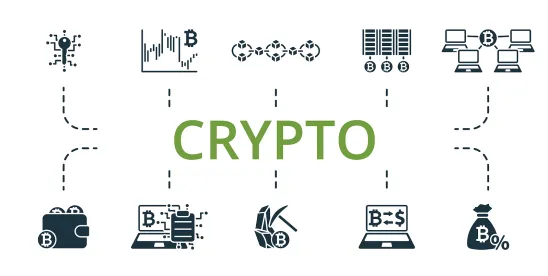Go-To Guide:
- The Board of Governors of the Federal Reserve System (Board) has withdrawn supervisory guidance for Board-supervised banks concerning crypto-asset and dollar token activities and Board expectations for these activities.
- The Board, the Federal Deposit Insurance Corporation (FDIC), and the Office of the Comptroller of the Currency (OCC) also withdrew joint supervisory statements on crypto-asset activities and exposures.
- The OCC issued Interpretive Letter #1184 (IL 1184) reaffirming that OCC-supervised banks can provide and outsource crypto-asset custody services.
- It is unclear whether the Board and the FDIC will issue additional guidance for integrating cryptocurrency in the U.S. banking system.
- Until regulators issue specific and comprehensive crypto-asset guidance, banks should proceed with caution and adhere to existing safety and soundness expectations.
On April 24, 2025, the Board withdrew its supervisory guidance for Board-supervised banks relating to crypto-asset and dollar token activities.1The Board rescinded (1) its Aug. 16, 2022, supervisory letter that required state member banks engaging, or seeking to engage in, crypto-asset activities to provide the Board with advance notification; and (2) its Aug. 8, 2023, supervisory letter that imposed a non-objection process on state member banks issuing, holding, or transacting in dollar tokens2 to facilitate payments.
Furthermore, the Board and the FDIC joined the OCC in withdrawing from their joint statements regarding crypto-asset activities and exposures. The Board and the FDIC withdrew (1) their Jan. 3, 2023, joint statement that identified risks associated with the crypto-asset sector and expressed safety and soundness concerns with crypto-asset activities, and (2) their Feb. 23, 2023, joint statement on liquidity risks related to certain sources of funding from crypto-asset entities, which emphasized the importance of effective risk management practices.3
On May 7, 2025, the OCC issued IL 1184 clarifying that “banks may buy and sell assets held in custody at the custody customer’s direction and are permitted to outsource bank-permissible crypto-asset activities, including custody and execution services to third parties, subject to appropriate third-party risk management practices.” Related services include facilitating the customer’s cryptocurrency and fiat currency exchange transactions, transaction settlement, trade execution, recordkeeping, valuation, tax services, and reporting. The OCC noted that banks may provide crypto-asset custody services in a non-fiduciary or fiduciary capacity subject to 12 C.F.R. part 9 or 150, as applicable. While prior regulatory approval is not required, the OCC expects banks to conduct such activities “in a safe and sound manner and in compliance with applicable law.”
These developments are aligned with the broader objective of the Trump administration to position the United States as a leader in the cryptocurrency and financial technology space, as it noted during its first months after taking office.4
Potential Implications
These actions remove procedural regulatory hurdles for banks engaging in crypto-asset activities. Banks now have greater autonomy to explore permissible crypto-related activities without undergoing a prior supervisory review process. However, without explicit pre-approval, banks bear more responsibility for ensuring permissible crypto-asset activities are “consistent with safety and soundness and applicable laws and regulations.”5
The OCC’s issuance of IL 1184 reaffirms and expands upon previous guidance regarding national banks’ authority to engage in crypto-asset activities in that “[p]roviding crypto-asset custody services is a modern form of traditional bank custody activities.”6
The Board expressed that it “will instead monitor banks’ crypto-asset activities through the normal supervisory process.”7 It is unclear whether the withdrawal of guidance will ease legacy regulatory barriers for banks seeking to engage in crypto-related activities. The Board noted that it will work with the FDIC and the OCC to determine whether additional guidance is appropriate.8 The FDIC stated that it is working with the agencies to explore “issuing additional clarity with respect to banking organizations’ crypto-asset and related activities in the coming weeks and months.”9
Takeaways
While crypto is a newer asset class, federal regulators have made it clear that existing risk management expectations apply, regardless of the type of asset or technology involved. Regulators expect banks to treat crypto activities with the same level of rigor as any other line of business – if not more so, due to their volatility, legal ambiguity, and operational complexities.10 While the federal banking agencies indicated they are considering whether to issue additional guidance, banks are now operating with minimal guidance for crypto-asset specific activities. For now, banks should be prepared to learn of crypto-specific regulatory expectations during the examination process. The agencies’ statements regarding potential new guidance or clarity may serve as an opportunity to provide more tailored guidance in this space.
In the interim, banks currently engaged or considering engaging in digital-asset activity should continue to consider the prior guidance in maintaining or establishing controls for digital-asset activity, and at the same time, remain vigilant of any further guidance the regulatory agencies may provide. Key principles and practices from traditional bank risk guidance should be applied to crypto activities, including, but not limited to: KYC and CDD;11 AML and CFT;12Third-Party Risk Management;13 Operational Risk Management;14 and Governance and Risk Appetite Frameworks.15 While banks should consider engaging federal regulators proactively to seek informal feedback even though formal pre-approval is no longer required, state-chartered banks should also consider whether to engage their state regulators, as there may be divergent comfort levels between federal and state regulators regarding permissible crypto-asset activities.






 />i
/>i
